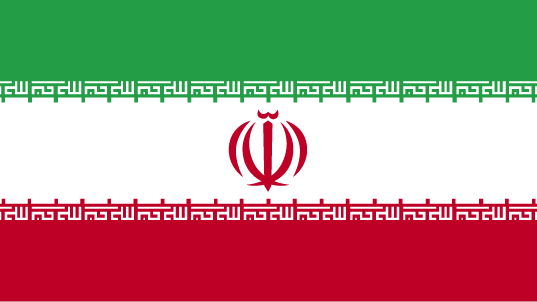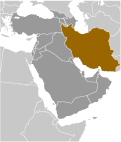
|
|
Advertisements:
EconomyEconomy - overview
Iran's economy is marked by statist policies and an inefficient state sector, which create major distortions throughout the system, and reliance on oil, which provides the majority of government revenues. Price controls, subsidies, and other rigidities weigh down the economy, undermining the potential for private-sector-led growth. Private sector activity is typically limited to small-scale workshops, farming, and services. Significant informal market activity flourishes and corruption is widespread. Tehran since the early 1990s has recognized the need to reduce these inefficiencies, and in December 2010 the legislature passed President Mahmud AHMADI-NEJAD's Targeted Subsidies Law (TSL) to reduce state subsidies on food and energy. This was the most extensive economic reform since the government implemented gasoline rationing in 2007. Over a five-year period the bill will phase out subsidies that previously cost Tehran $60-$100 billion annually and mostly benefited Iran's upper and middle classes. Cash payouts of $45 per person to more than 90% of Iranian households mitigated initial widespread resistance to the TSL program, though popular acceptance remains vulnerable to rising inflation. A rise in world oil prices in 2011 increased Iran's oil export revenue by roughly $28 billion over 2010, easing some of the financial impact of international sanctions. However, expansionary fiscal and monetary policies, government mismanagement, the sanctions, and a depreciating currency are fueling inflation, and GDP growth remains stagnant. Iran also continues to suffer from double-digit unemployment and underemployment. Underemployment among Iran''s educated youth has convinced many to seek jobs overseas, resulting in a significant "brain drain." Gdp (purchasing power parity) World Ranking: 18
$1.003 trillion (2011 est.)
$983.5 billion (2010 est.) $928.7 billion (2009 est.) Note Data in US dollars Gdp (official exchange rate)
$482.4 billion (2011 est.)
Gdp - real growth rate World Ranking: 149
2% (2011 est.)
5.9% (2010 est.) 4% (2009 est.) Gdp - per capita (ppp) World Ranking: 94
$13,200 (2011 est.)
$13,200 (2010 est.) $12,600 (2009 est.) Note Data are in 2011 US dollars Gdp - composition by sector
Agriculture 10.4%
Industry 37.7% Services 51.8% (2011 est.) Labor force World Ranking: 24
26.37 million
Note Shortage of skilled labor (2011 est.) Labor force - by occupation
Agriculture 25%
Industry 31% Services 45% (June 2007) Unemployment rate World Ranking: 151
15.3% (2011 est.)
14.6% (2010 est.) Note Data are according to the Iranian Government Population below poverty line
18.7% (2007 est.)
Household income or consumption by percentage share
Lowest 10% 2.6%
Highest 10% 29.6% (2005) Distribution of family income - gini index World Ranking: 45
44.5 (2006)
Investment (gross fixed) World Ranking: 27
27.6% of GDP (2011 est.)
Budget
Revenues $131.2 billion
Expenditures $92.63 billion (2011 est.) Taxes and other revenues World Ranking: 111
27.2% of GDP (2011 est.)
Budget surplus (+) or deficit (-) World Ranking: 11
8% of GDP (2011 est.)
Public debt World Ranking: 131
12% of GDP (2011 est.)
13.2% of GDP (2010 est.) Note Includes publicly guaranteed debt Inflation rate (consumer prices) World Ranking: 219
22.5% (2011 est.)
12.4% (2010 est.) Note Official Iranian estimate Central bank discount rate
NA%
Commercial bank prime lending rate World Ranking: 67
12.5% (31 December 2011 est.)
12.5% (31 December 2010 est.) Stock of narrow money World Ranking: 44
$54.88 billion (31 December 2011 est.) $50.15 billion (31 December 2010 est.) Stock of broad money World Ranking: 27
$367.8 billion (31 December 2011 est.) $310.4 billion (31 December 2010 est.) Stock of domestic credit World Ranking: 45
$138.3 billion (31 December 2011 est.) $135 billion (31 December 2010 est.) Market value of publicly traded shares World Ranking: 44
$107.2 billion (31 December 2011) $86.62 billion (31 December 2010) $63.3 billion (31 December 2009) Agriculture - products
Wheat, rice, other grains, sugar beets, sugarcane, fruits, nuts, cotton; dairy products, wool; caviar Industries
Petroleum, petrochemicals, fertilizers, caustic soda, textiles, cement and other construction materials, food processing (particularly sugar refining and vegetable oil production), ferrous and non-ferrous metal fabrication, armaments Industrial production growth rate World Ranking: 156
-2.7% excluding oil (2011 est.) Electricity - production World Ranking: 18
212.8 billion kWh (2009 est.)
Electricity - consumption World Ranking: 18
206.7 billion kWh (2009 est.)
Electricity - exports
6.15 billion kWh (2009 est.)
Electricity - imports
2.06 billion kWh (2009 est.)
Oil - production World Ranking: 4
4.252 million bbl/day (2010 est.) Oil - consumption World Ranking: 14
1.845 million bbl/day (2010 est.) Oil - exports World Ranking: 3
2.523 million bbl/day (2009 est.) Oil - imports World Ranking: 35
297,100 bbl/day (2009 est.)
Oil - proved reserves World Ranking: 4
137 billion bbl based on Iranian claims Note Iran has about 10% of world reserves (1 January 2011 est.) Natural gas - production World Ranking: 5
138.5 billion cu m (2010 est.)
Natural gas - consumption World Ranking: 4
137.5 billion cu m
Note Excludes injection and flaring (2010 est.) Natural gas - exports World Ranking: 25
7.87 billion cu m (2010 est.)
Natural gas - imports World Ranking: 29
6.9 billion cu m (2010 est.)
Natural gas - proved reserves World Ranking: 2
29.61 trillion cu m (1 January 2011 est.) Current account balance World Ranking: 12
$42 billion (2011 est.)
$25.46 billion (2010 est.) Exports World Ranking: 34
$131.8 billion (2011 est.)
$108.6 billion (2010 est.) Exports - commodities
Petroleum 80%, chemical and petrochemical products, fruits and nuts, carpets Exports - partners
China 21%, India 9.3%, Japan 8.9%, Turkey 8.7%, South Korea 7.9%, Italy 5.2% (2011) Imports World Ranking: 41
$76.1 billion (2011 est.)
$68.45 billion (2010 est.) Imports - commodities
Industrial supplies, capital goods, foodstuffs and other consumer goods, technical services Imports - partners
UAE 30.6%, China 17.2%, South Korea 8.4%, Germany 4.8%, Turkey 4.2% (2011) Reserves of foreign exchange and gold World Ranking: 22
$109.7 billion (31 December 2011 est.) $78.9 billion (31 December 2010 est.) Debt - external World Ranking: 80
$17.9 billion (31 December 2011 est.) $22.1 billion (31 December 2010 est.) Stock of direct foreign investment - at home World Ranking: 70
$20.15 billion (31 December 2011 est.) $18.75 billion (31 December 2010 est.) Stock of direct foreign investment - abroad World Ranking: 66
$2.521 billion (31 December 2011 est.) $2.171 billion (31 December 2010 est.) Exchange rates
Iranian rials (IRR) per US dollar - 10,616.3 (2011 est.)10,254.18 (2010 est.) 9,864.3 (2009) 9,142.8 (2008) 9,407.5 (2007) Fiscal year
21 March - 20 March
Comments
Add a new comment: |
Advertisement
Members area
Iran (Tehran):
 
GPS points from Iran (Tehran)
|
||||||||

 Known as Persia until 1935, Iran became an Islamic republic in 1979 after the ruling monarchy was overthrown and Shah Mohammad Reza PAHLAVI was forced into exile. Conservative clerical forces established a theocratic system of government with ultimate political authority vested in a learned religious scholar referred to commonly as the Supreme Leader who, according to the constitution, is accountable only to the Assembly of Experts - a popularly elected 86-member body of clerics. US-Iranian relations have been strained since a group of Iranian students seized the US Embassy in Tehran on 4 November 1979 and held it until 20 January 1981. During 1980-88, Iran fought a bloody, indecisive war with Iraq that eventually expanded into the Persian Gulf and led to clashes between US Navy and Iranian military forces between 1987 and 1988. Iran has been designated a state sponsor of terrorism for its activities in Lebanon and elsewhere in the world and remains subject to US, UN, and EU economic sanctions and export controls because of its continued involvement in terrorism and its nuclear weapons ambitions. Following the election of reformer Hojjat ol-Eslam Mohammad KHATAMI as president in 1997 and a reformist Majles (legislature) in 2000, a campaign to foster political reform in response to popular dissatisfaction was initiated. The movement floundered as conservative politicians, through the control of unelected institutions, prevented reform measures from being enacted and increased repressive measures. Starting with nationwide municipal elections in 2003 and continuing through Majles elections in 2004, conservatives reestablished control over Iran's elected government institutions, which culminated with the August 2005 inauguration of hardliner Mahmud AHMADI-NEJAD as president. His controversial reelection in June 2009 sparked nationwide protests over allegations of electoral fraud. The UN Security Council has passed a number of resolutions (1696 in July 2006, 1737 in December 2006, 1747 in March 2007, 1803 in March 2008, and 1835 in September 2008 and 1929 in June 2010) calling for Iran to suspend its uranium enrichment and reprocessing activities and comply with its IAEA obligations and responsibilities. Resolutions 1737, 1477, 1803 and 1929 subject a number of Iranian individuals and entities involved in Iran's nuclear and ballistic missile programs to sanctions. Additionally, several Iranian entities are subject to US sanctions under Executive Order 13382 designations for proliferation activities and EO 13224 designations for support of terrorism. In mid-February 2011, opposition activists conducted the largest antiregime rallies since December 2009, spurred by the success of uprisings in Tunisia and Egypt. Protester turnout probably was at most tens of thousands and security forces were deployed to disperse protesters. Additional protests in March 2011 failed to elicit significant participation largely because of the robust security response, although discontent still smolders.
Known as Persia until 1935, Iran became an Islamic republic in 1979 after the ruling monarchy was overthrown and Shah Mohammad Reza PAHLAVI was forced into exile. Conservative clerical forces established a theocratic system of government with ultimate political authority vested in a learned religious scholar referred to commonly as the Supreme Leader who, according to the constitution, is accountable only to the Assembly of Experts - a popularly elected 86-member body of clerics. US-Iranian relations have been strained since a group of Iranian students seized the US Embassy in Tehran on 4 November 1979 and held it until 20 January 1981. During 1980-88, Iran fought a bloody, indecisive war with Iraq that eventually expanded into the Persian Gulf and led to clashes between US Navy and Iranian military forces between 1987 and 1988. Iran has been designated a state sponsor of terrorism for its activities in Lebanon and elsewhere in the world and remains subject to US, UN, and EU economic sanctions and export controls because of its continued involvement in terrorism and its nuclear weapons ambitions. Following the election of reformer Hojjat ol-Eslam Mohammad KHATAMI as president in 1997 and a reformist Majles (legislature) in 2000, a campaign to foster political reform in response to popular dissatisfaction was initiated. The movement floundered as conservative politicians, through the control of unelected institutions, prevented reform measures from being enacted and increased repressive measures. Starting with nationwide municipal elections in 2003 and continuing through Majles elections in 2004, conservatives reestablished control over Iran's elected government institutions, which culminated with the August 2005 inauguration of hardliner Mahmud AHMADI-NEJAD as president. His controversial reelection in June 2009 sparked nationwide protests over allegations of electoral fraud. The UN Security Council has passed a number of resolutions (1696 in July 2006, 1737 in December 2006, 1747 in March 2007, 1803 in March 2008, and 1835 in September 2008 and 1929 in June 2010) calling for Iran to suspend its uranium enrichment and reprocessing activities and comply with its IAEA obligations and responsibilities. Resolutions 1737, 1477, 1803 and 1929 subject a number of Iranian individuals and entities involved in Iran's nuclear and ballistic missile programs to sanctions. Additionally, several Iranian entities are subject to US sanctions under Executive Order 13382 designations for proliferation activities and EO 13224 designations for support of terrorism. In mid-February 2011, opposition activists conducted the largest antiregime rallies since December 2009, spurred by the success of uprisings in Tunisia and Egypt. Protester turnout probably was at most tens of thousands and security forces were deployed to disperse protesters. Additional protests in March 2011 failed to elicit significant participation largely because of the robust security response, although discontent still smolders.